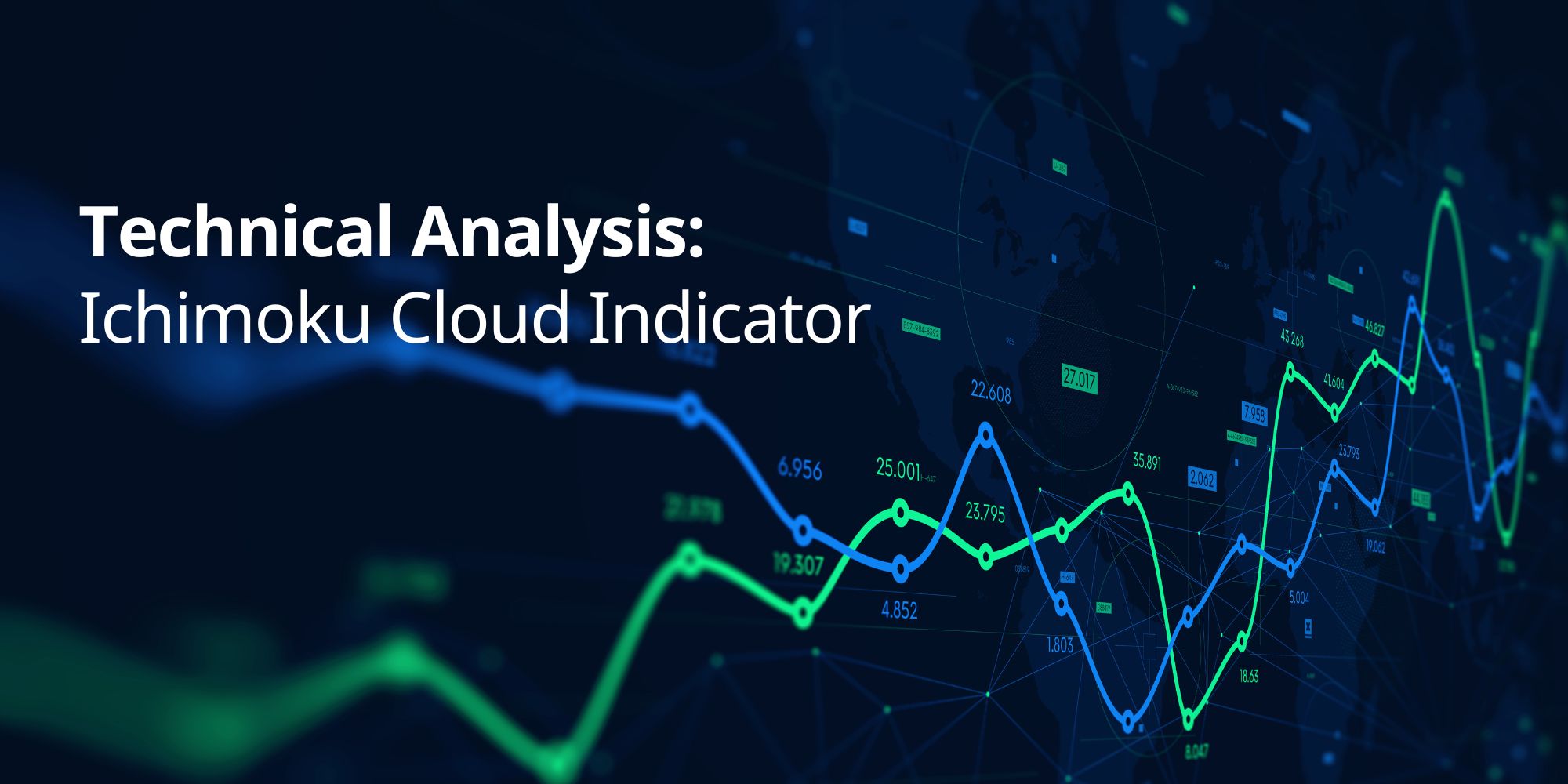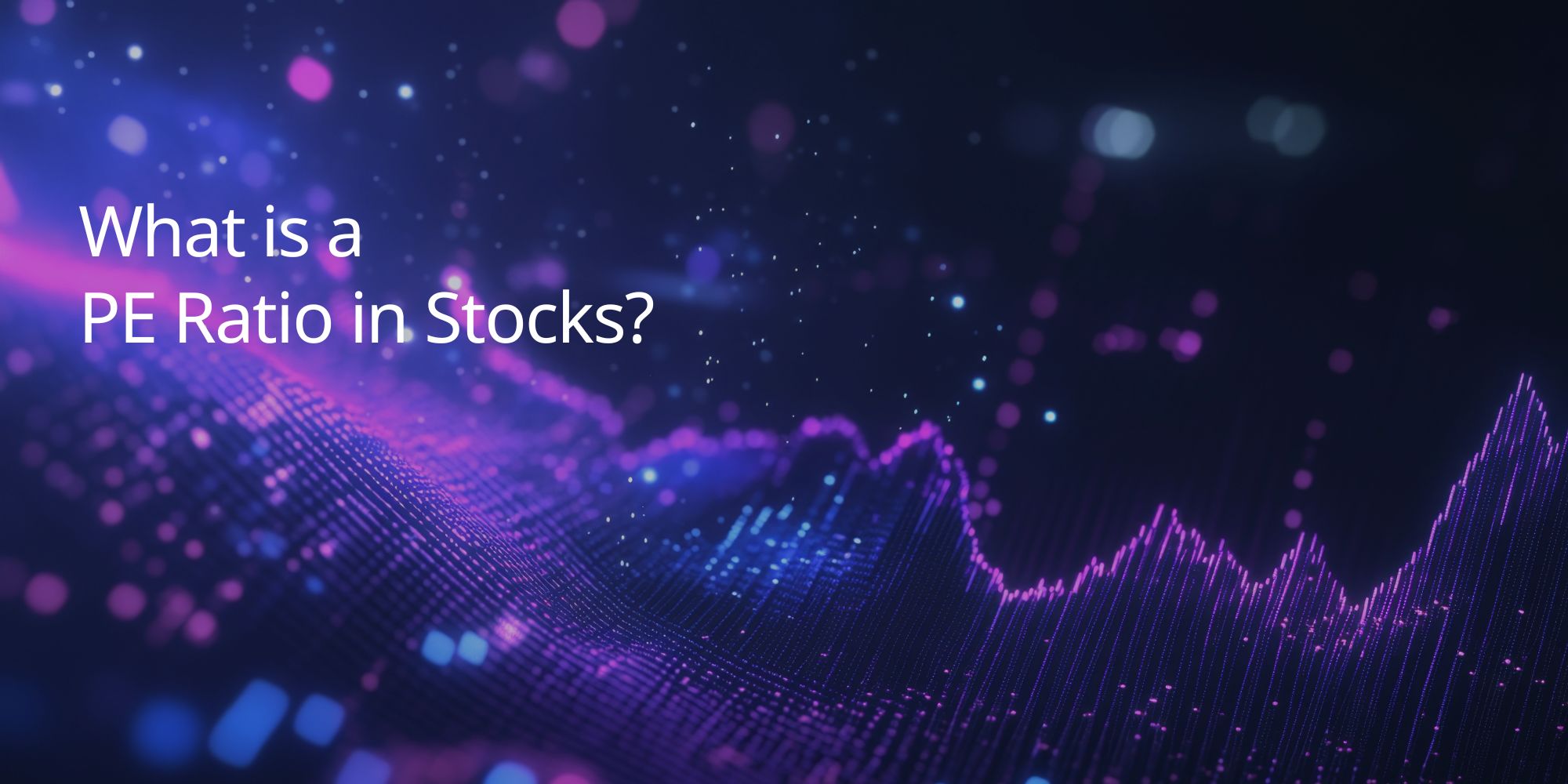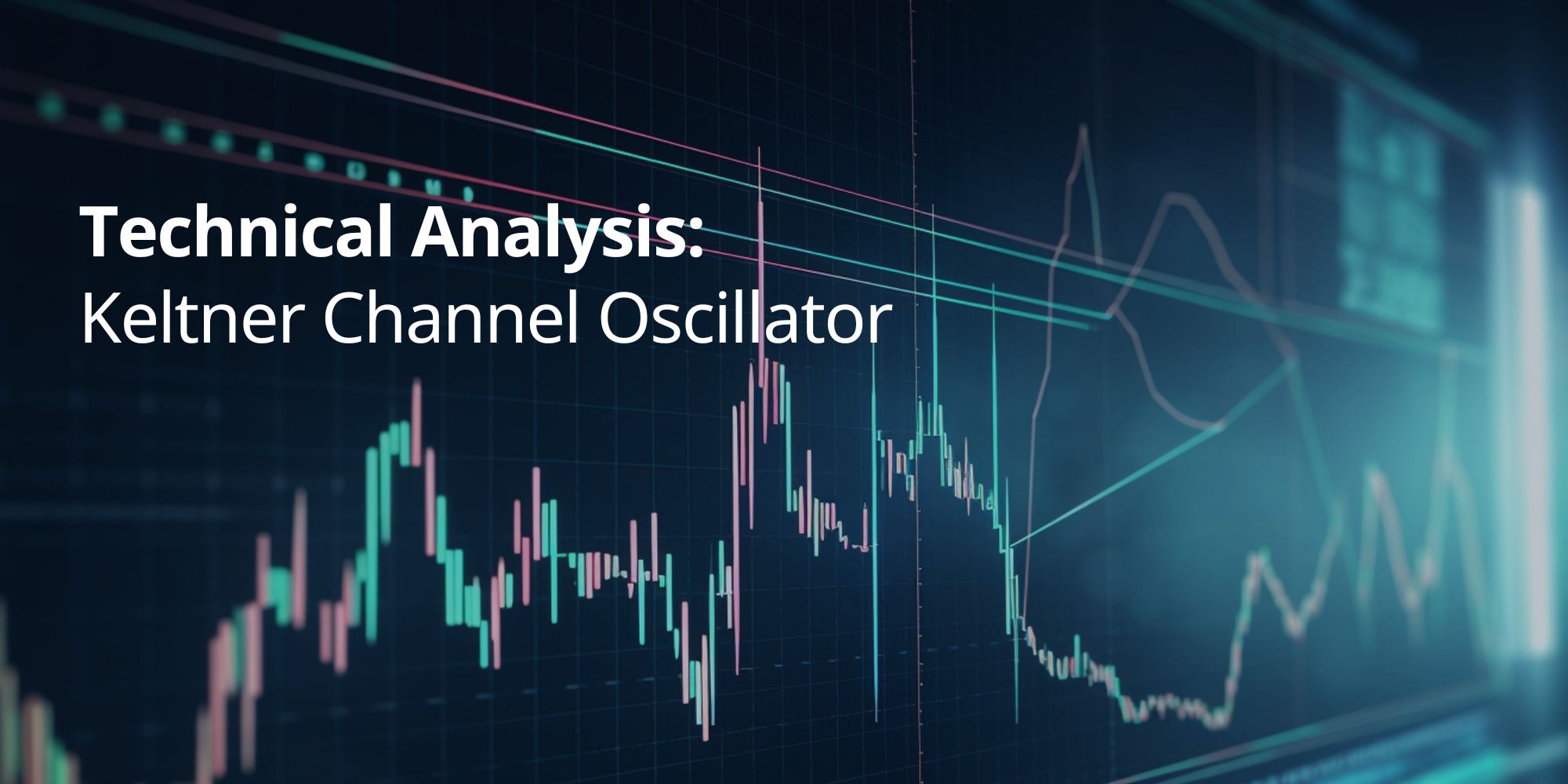The Ichimoku Cloud is a versatile and comprehensive technical indicator that provides traders with a wealth of information about market trends, momentum, and support/resistance levels. While it may seem complex at first glance, understanding its components and signals can significantly enhance your trading decisions.
This guide from Plexytrade explores the Ichimoku Cloud in detail, covering its definition, calculation, interpretation, and practical applications in trading. Learn how to use this powerful indicator to identify trends, spot potential reversals, and make more informed decisions in the financial markets.
What is the Ichimoku Cloud Indicator?
The Ichimoku Cloud is a comprehensive indicator that provides traders with a wealth of information about market trends, momentum, and support/resistance levels. It was developed by Goichi Hosoda, a Japanese journalist, and published in 1969 after decades of research.
Components of the Ichimoku Cloud
The Ichimoku Cloud consists of five lines:
- Tenkan-sen (Conversion Line): The midpoint of the 9-period high-low range.
- Kijun-sen (Base Line): The midpoint of the 26-period high-low range.
- Senkou Span A (Leading Span A): The midpoint of the Tenkan-sen and Kijun-sen, shifted 26 periods forward.
- Senkou Span B (Leading Span B): The midpoint of the 52-period high-low range, shifted 26 periods forward.
- Chikou Span (Lagging Span): The closing price plotted 26 periods behind the current price.
The “Cloud”
Senkou Span A and Senkou Span B form the “cloud,” which is the most distinctive feature of the Ichimoku Cloud. The cloud is shaded green when Senkou Span A is above Senkou Span B, indicating a bullish trend, and red when Senkou Span A is below Senkou Span B, indicating a bearish trend.
Interpreting the Ichimoku Cloud
The Ichimoku Cloud provides traders with a variety of signals:
- Trend Direction: The position of the price relative to the cloud indicates the trend direction. A price above the cloud suggests an uptrend, while a price below the cloud suggests a downtrend.
- Support and Resistance: The cloud itself can act as dynamic support and resistance levels.
- Momentum: The Tenkan-sen and Kijun-sen can be used to assess momentum and identify potential trend reversals.
- Confirmation: The Chikou Span can be used to confirm the strength of a trend.
Calculating the Ichimoku Cloud
The Ichimoku Cloud is calculated using five different lines, each with its own formula:
Conversion Line (tenkan sen) = (9-period high + 9-period low) / 2
Base Line (kijun sen) = (26-period high + 26-period low) / 2
Leading Span A (senkou span A) = (Conversion Line + Base Line) / 2
Leading Span B (senkou span B) = (52-period high + 52-period low) / 2
Lagging Pan (chikou span) = This line is simply the closing price plotted 26 periods behind the current price.
The Cloud
The area between Senkou Span A and Senkou Span B is shaded to form the “cloud.”
- Green Cloud: Senkou Span A is above Senkou Span B, indicating a bullish trend.
- Red Cloud: Senkou Span A is below Senkou Span B, indicating a bearish trend.
Interpreting the Ichimoku Cloud
The Ichimoku Cloud might seem complex at first, but once you understand its components, it can provide valuable insights into market trends and potential trading opportunities.
Momentum Signals
The relationship between the Tenkan-sen (Conversion Line) and the Kijun-sen (Base Line) can provide momentum signals:
- Bullish Crossover: When the Tenkan-sen crosses above the Kijun-sen, it suggests that short-term momentum is increasing and could signal a potential uptrend.
- Bearish Crossover: When the Tenkan-sen crosses below the Kijun-sen, it suggests that short-term momentum is decreasing and could signal a potential downtrend.
Trend-Following Signals
The Ichimoku Cloud provides several signals for identifying and confirming trends:
- Price Relative to the Cloud:
- Price above the cloud: Indicates a bullish trend.
- Price below the cloud: Indicates a bearish trend.
- Price inside the cloud: Indicates a period of consolidation or uncertainty.
- Cloud Color:
- Green cloud: Senkou Span A is above Senkou Span B, suggesting a bullish trend.
- Red cloud: Senkou Span A is below Senkou Span B, suggesting a bearish trend.
- Cloud Thickness:
- Thick cloud: Indicates strong support or resistance.
- Thin cloud: Indicates weaker support or resistance.
Combining Signals
Traders often combine these signals to make more informed trading decisions. For example, a bullish signal might be generated when the price is above a green cloud and the Tenkan-sen crosses above the Kijun-sen.
Advantages of the Ichimoku Cloud Indicator
The Ichimoku Cloud is a popular indicator among traders due to its versatility and comprehensive approach to technical analysis. Here are some of its key advantages:
- Provides a Holistic View: The Ichimoku Cloud provides a comprehensive view of the market by incorporating multiple data points and displaying them in a single indicator. It offers insights into trend direction, momentum, support and resistance levels, and potential trading opportunities.
- Versatile Applications: The Ichimoku Cloud can be applied to various financial instruments, including stocks, indices, commodities, and currencies. It’s a versatile tool that can be used in different trading strategies and across different timeframes.
- Identifies Dynamic Support and Resistance: The “cloud” itself acts as dynamic support and resistance levels, adjusting to changing market conditions. This can help traders identify key price levels where the market might experience buying or selling pressure.
- Clear Trend Identification: The Ichimoku Cloud provides clear visual signals of trend direction. The position of the price relative to the cloud and the color of the cloud can help traders quickly identify the prevailing trend.
- Momentum Signals: The Tenkan-sen (Conversion Line) and Kijun-sen (Base Line) can be used to assess momentum and identify potential trend reversals. Crossovers of these lines can generate trading signals.
- Confirmation with Lagging Span: The Chikou Span (Lagging Span) can be used to confirm the strength of a trend or signal potential reversals.
Plexytrade provides access to the Ichimoku Cloud and a wide range of other technical indicators on its advanced trading platforms. Our educational resources and market insights can help you learn how to use these tools effectively and enhance your trading strategies.
Limitations of the Ichimoku Cloud Indicator
While the Ichimoku Cloud is a powerful and versatile indicator, it’s important to be aware of its limitations:
- Complexity: The Ichimoku Cloud can be visually complex, with five different lines and a shaded “cloud” area. This can make it challenging for some traders, especially beginners, to interpret its signals effectively.
- Lagging Indicator: The Ichimoku Cloud is based on historical price data, which means it’s a lagging indicator. This can sometimes cause it to be slow to signal trend reversals or changes in momentum.
- False Signals in Choppy Markets: In sideways or choppy markets, where the price is not making clear higher highs or lower lows, the Ichimoku Cloud can generate false signals as the price crosses back and forth over the lines and the cloud.
- Overwhelmed with Signals: The Ichimoku Cloud can generate a large number of signals, especially on shorter timeframes. This can be overwhelming for some traders and makes it difficult to identify the most significant signals.
Mitigating the Limitations
To overcome these limitations, traders can:
- Focus on Key Signals: Concentrate on the most important signals, such as crossovers of the Tenkan-sen and Kijun-sen, price breakouts from the cloud, and changes in the cloud’s color.
- Combine with Other Indicators: Use the Ichimoku Cloud in conjunction with other technical indicators, such as moving averages, trend lines, or momentum oscillators, to confirm signals and filter out false signals.
- Consider Market Context: Always interpret the Ichimoku Cloud’s signals in the context of the overall market environment. Consider factors such as news events, economic data releases, and the broader market trend when making trading decisions.
- Practice Risk Management: Use appropriate risk management techniques, such as stop-loss orders and position sizing, to limit potential losses.
Combining the Ichimoku Cloud with Other Indicators
While the Ichimoku Cloud is a powerful indicator on its own, combining it with other indicators can enhance its effectiveness and provide more reliable trading signals.
Here are some examples of how traders might combine the Ichimoku Cloud with other indicators:
- Ichimoku Cloud and Moving Averages: Moving averages can help confirm the trend direction identified by the Ichimoku Cloud. For example, if the price is above the cloud and also above a key moving average (such as the 200-day moving average), it strengthens the bullish signal.
- Ichimoku Cloud and RSI: The Relative Strength Index (RSI) is a momentum oscillator that can help identify overbought and oversold conditions. Traders might use the RSI in conjunction with the Ichimoku Cloud to confirm potential buy or sell signals. For example, if the price is above the cloud and the RSI is showing overbought conditions, it could signal a potential pullback.
- Ichimoku Cloud and MACD: The Moving Average Convergence Divergence (MACD) is a trend-following momentum indicator. Traders might use the MACD to confirm the strength of a trend identified by the Ichimoku Cloud. For example, if the price is above the cloud and the MACD is showing a bullish crossover, it could confirm the strength of the uptrend.
- Ichimoku Cloud and Volume: Analyzing volume in conjunction with the Ichimoku Cloud can provide further confirmation of trends and potential reversals. For example, if the price breaks out of the cloud with high volume, it suggests a strong move in that direction.
Conclusion
The Ichimoku Cloud is a powerful and versatile indicator that can provide traders with a comprehensive view of the market. By understanding its components, signals, and limitations, you can effectively incorporate it into your trading strategy and improve your decision-making.
Plexytrade equips you with the resources you need to master the Ichimoku Cloud and enhance your trading skills. Our advanced trading platforms, educational materials, and market insights empower you to:
- Analyze the Ichimoku Cloud and interpret its signals.
- Identify trends, support and resistance levels, and potential reversals.
- Combine the Ichimoku Cloud with other indicators for a more comprehensive analysis.
- Make informed trading decisions based on a deeper understanding of market dynamics.
Ready to unlock the power of the Ichimoku Cloud? Sign up with Plexytrade.com today and start your trading journey.















